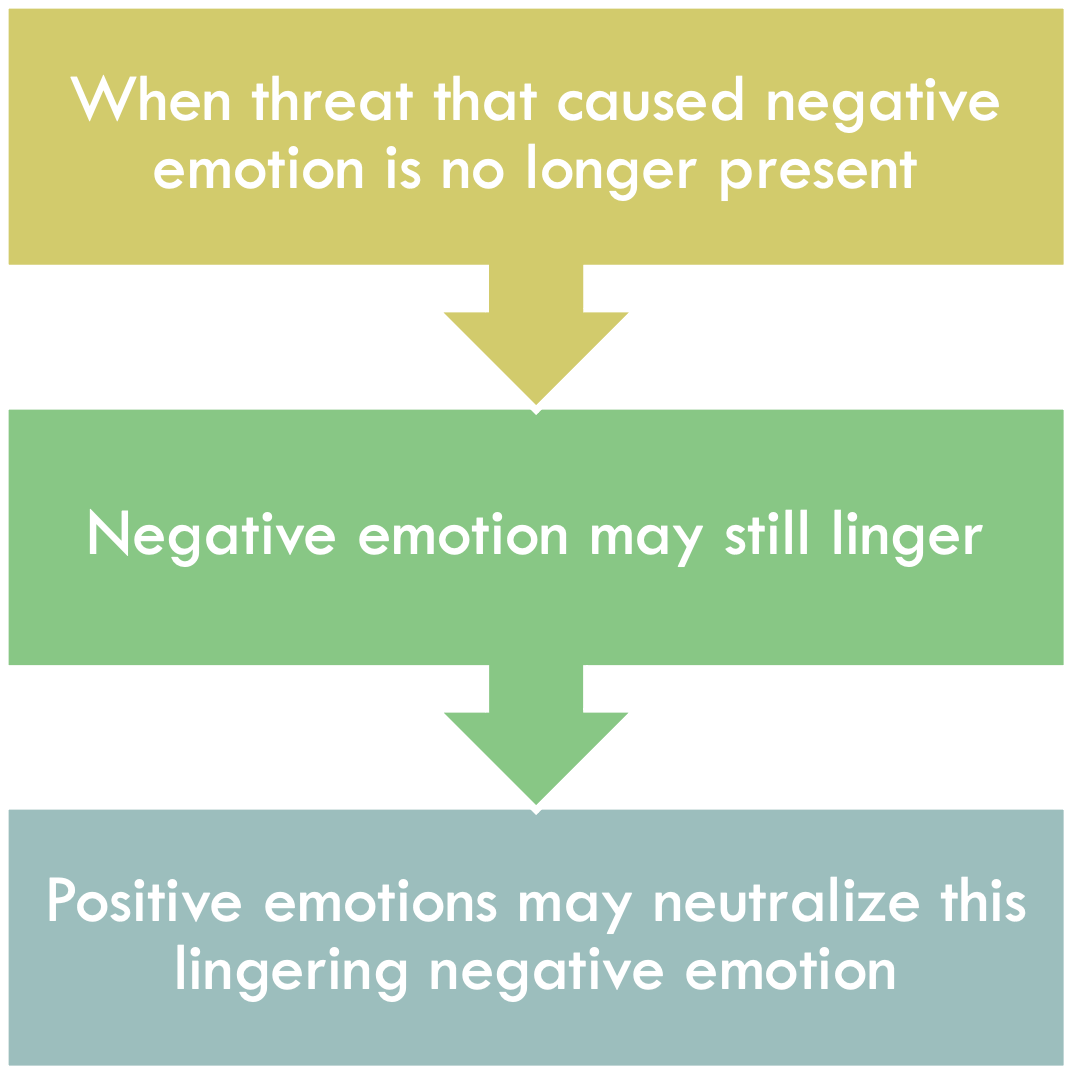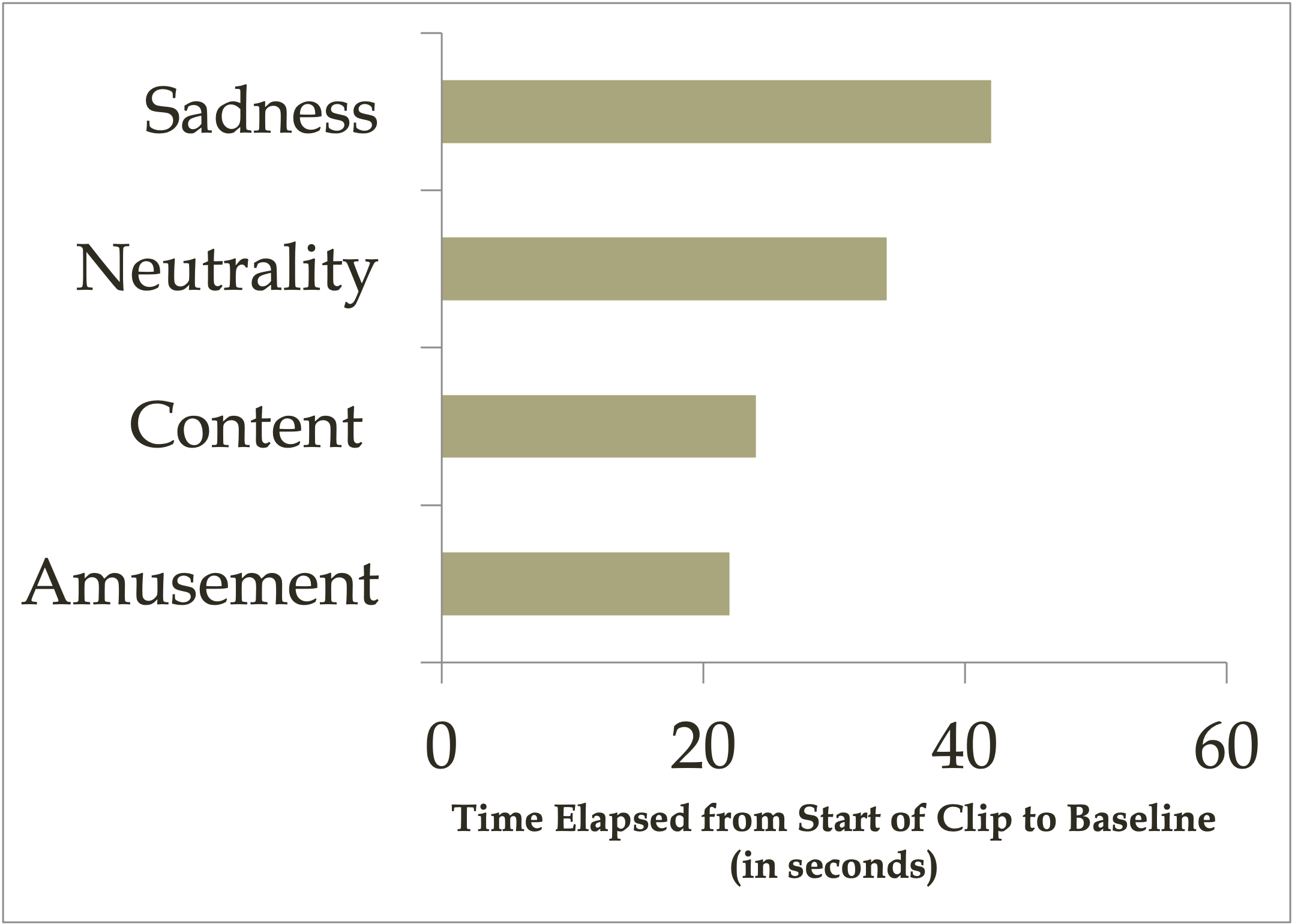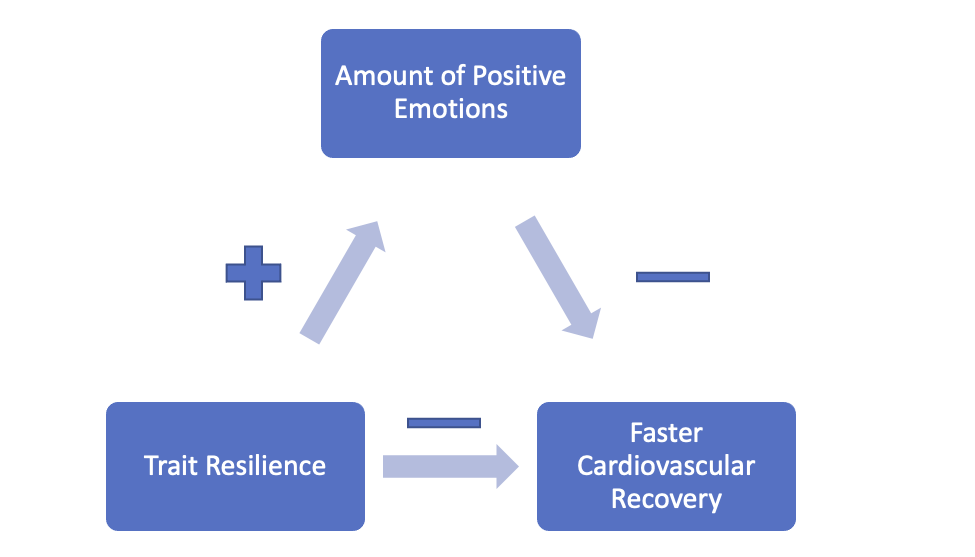Chapter 13: Positive Emotions
Undoing Effect of Positive Emotions

In a study that tested the undoing effect (Fredrickson et al., 2000), participants first completed baseline measures of heart rate, finger pulse, and blood pressure. Then, all participants were induced to feel a high-arousal negative emotion by telling participants they would have 60 seconds to write a 3-minute speech on a topic provided to them. After this, participants were randomly assigned to watch a film clip that elicited either amusement, contentment, neutrality, or sadness.
Contentment: Waves breaking on the beach
Neutrality: Abstract movedd of sticks piling up
Sadness: A young boy crying
Remember, throughout the study physiological measures were taken. The dependent variable was cardiovascular recovery measured as the time from which it took participants physiological results to return to baseline. In Figure 21, recovery on the x-axis was measured as the time it took from the start of their assigned clip to the time when their physiology returned to baseline. Keep in mind that a short time indicates faster cardiovascular recovery.
Figure 21
Cardiovascular Recovery for Each Emotion Clip (Fredrickson et al., 2000)

Reproduced from “The undoing effect of positive emotions,“ by B.L. Fredrickson, R.A. Mancuso, C. Branigan, and M.M. Tugade, 2000, (Motivation and Emotion, 24(4), p. 254) Copyright 2000 by Plenum.
Amusement and contentment resulted in significantly faster cardiovascular recovery than the neutral and sadness film clips. Interestingly, the neutral clip resulted in faster recovery than the sadness clip. In a follow-up study, Fredrickson and colleagues (2000) conducted the same study except that participants did not engage in the first stressor. So, participants simply viewed one of the four clips. Participants watching the sad clip exhibit more arousal than the other three conditions. Differences were not found between the positive and neutral conditions. What does this mean? This means that experiencing positive emotions does not regulate our physiology better than neutral states. Instead, experiencing a positive emotion directly after a negative emotion can help us to mitigate the negative emotional responses better than experiencing a neutral state after a negative emotion.
Undoing Effect of Positive Emotions: After a negative emotion, positive emotions help us to quickly return to baseline cardiovascular states.
One last interesting note about the undoing effect. Later work (Tugade & Fredrickson, 2004) found that the experience of positive emotions mediates the relationship between trait resilience and cardiovascular recovery (see Figure 22). In other words, people high in resilience are faster to recover from physiological arousal because resilient individuals experience more positive emotions .
Figure 22
Positive Emotions Mediated the Relationship between Resilience and Cardiovascular Recovery (Tugade & Fredrickson, 2004)


